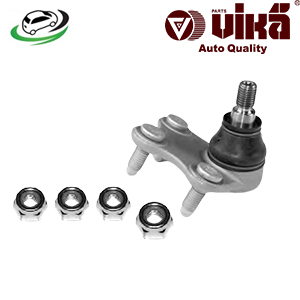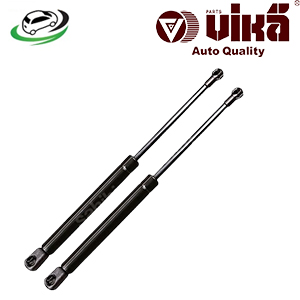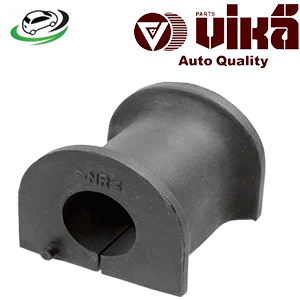-52%
Get Front Anti Roll Bar Bushing VW Transporter 7J#/7H#/7F#/7E#/SG#/SF#/ Campmobil-T5/T6 7H5411313A
The front anti-roll bar bushing is a critical component of a vehicle’s suspension system. It plays a vital role in maintaining stability and handling by reducing body roll during cornering. In this guide, we’ll explore the function, types, benefits, signs of wear, and maintenance of front anti-roll bar bushings, as well as the process of replacing them.
What is a Front Anti-Roll Bar Bushing?
The front anti-roll bar bushing, also known as a sway bar bushing, is a small but crucial part of the vehicle’s suspension system. It is made from a flexible material, typically rubber or polyurethane, and is designed to cushion the contact between the anti-roll bar (sway bar) and the vehicle’s chassis. The bushing helps to reduce vibrations and noise while allowing the anti-roll bar to perform its function of reducing body roll during cornering.
Components of the Anti-Roll Bar System
- Anti-Roll Bar (Sway Bar): A metal rod that connects the left and right sides of the vehicle’s suspension. It works to reduce body roll by distributing the force of cornering evenly across the suspension.
- Bushings: The bushings are installed between the anti-roll bar and the chassis, providing a flexible yet secure mounting point that allows the bar to twist slightly as the vehicle corners.
- Mounting Brackets: The bushings are held in place by metal brackets that are bolted to the vehicle’s chassis.
Function of the Front Anti-Roll Bar Bushing
The primary function of the front anti-roll bar bushing is to secure the anti-roll bar to the vehicle’s chassis while allowing for the necessary movement of the bar. As the vehicle corners, the anti-roll bar twists to counteract body roll. The bushings allow this twisting motion while absorbing vibrations and reducing noise.
Key Functions
- Reduce Body Roll: By securing the anti-roll bar to the chassis, the bushings help reduce the amount of body roll experienced during cornering. This improves handling and stability, making the vehicle feel more planted on the road.
- Absorb Vibrations: The flexible material of the bushings helps to absorb road vibrations, preventing them from being transmitted to the vehicle’s chassis. This results in a smoother and quieter ride.
- Allow Controlled Movement: The bushings provide a secure mounting point for the anti-roll bar while still allowing it to twist slightly as needed. This controlled movement is essential for the anti-roll bar to function correctly.
Types of Front Anti-Roll Bar Bushings
Front anti-roll bar bushings come in various types and materials, each offering different levels of performance and durability. The two most common materials used for bushings are rubber and polyurethane.
Rubber Bushings
- Characteristics: Rubber bushings are the most common type of anti-roll bar bushings. They are made from a flexible, durable rubber material that provides good vibration absorption and noise reduction.
- Advantages: Rubber bushings offer a smooth and quiet ride, absorbing road vibrations effectively. They are also relatively inexpensive and easy to replace.
- Disadvantages: Over time, rubber bushings can wear out, becoming cracked or brittle. They may also become softer, leading to less effective control of body roll. Rubber bushings are more susceptible to degradation from exposure to heat, oil, and road chemicals.
Polyurethane Bushings
- Characteristics: Polyurethane bushings are a more durable alternative to rubber. They are made from a stiffer, more resilient material that provides better performance in demanding conditions.
- Advantages: Polyurethane bushings offer improved handling and stability by providing firmer support for the anti-roll bar. They are more resistant to wear and degradation from heat, oil, and chemicals, making them a popular choice for performance-oriented vehicles.
- Disadvantages: Due to their stiffness, polyurethane bushings can transmit more road vibrations and noise to the vehicle’s chassis, leading to a slightly harsher ride. They are also more expensive than rubber bushings.
Split vs. Solid Bushings
- Split Bushings: These are designed with a slit that allows them to be easily installed around the anti-roll bar without removing the bar from the vehicle. Split bushings are convenient for quick replacements.
- Solid Bushings: These are a single piece and require the anti-roll bar to be removed for installation. Solid bushings provide a more secure fit but can be more challenging to install.
Benefits of Front Anti-Roll Bar Bushings
Front anti-roll bar bushings provide several benefits that enhance the overall performance and comfort of a vehicle. These benefits include improved handling, reduced body roll, and increased ride comfort.
Improved Handling
- By securing the anti-roll bar to the chassis, bushings help to reduce body roll during cornering, improving the vehicle’s handling characteristics. This is particularly important for high-performance vehicles or those driven on winding roads.
Enhanced Stability
- Reducing body roll also enhances the stability of the vehicle, making it feel more planted and secure on the road. This can lead to increased driver confidence, especially in challenging driving conditions.
Increased Ride Comfort
- The flexible material of the bushings absorbs road vibrations, preventing them from being transmitted to the vehicle’s chassis. This results in a smoother, quieter ride for passengers.
Longevity of Suspension Components
- By absorbing vibrations and reducing stress on the anti-roll bar and chassis, bushings help to extend the life of other suspension components. This can reduce the need for costly repairs and maintenance.
Signs of Worn-Out Front Anti-Roll Bar Bushings
Like all suspension components, front anti-roll bar bushings are subject to wear and tear over time. Recognizing the signs of worn-out bushings is essential for maintaining the performance and safety of your vehicle.
Common Symptoms of Worn Bushings
- Clunking or Squeaking Noises: One of the most common signs of worn bushings is a clunking or squeaking noise when driving over bumps or during cornering. This noise occurs when the bushing has worn out and can no longer securely hold the anti-roll bar in place.
- Excessive Body Roll: If the vehicle experiences more body roll than usual during cornering, it may be a sign that the bushings are worn and no longer providing adequate support for the anti-roll bar.
- Loose or Unstable Handling: Worn bushings can lead to loose or unstable handling, making the vehicle feel less responsive and secure during driving.
- Visible Damage: During a visual inspection, you may notice cracks, tears, or other signs of wear on the bushings. Damaged bushings should be replaced as soon as possible to avoid further suspension issues.
Maintenance and Inspection of Front Anti-Roll Bar Bushings
Regular maintenance and inspection of the front anti-roll bar bushings are essential for ensuring the longevity and performance of your vehicle’s suspension system. Proper care can prevent premature wear and help you identify issues before they become serious problems.
Inspection Tips
- Visual Inspection: Periodically inspect the bushings for any visible signs of wear or damage, such as cracks, tears, or signs of degradation. Pay special attention to the condition of the rubber or polyurethane material.
- Listen for Noises: Pay attention to any unusual noises, such as clunking or squeaking, especially when driving over bumps or during cornering. These noises can indicate worn or damaged bushings.
- Check for Excessive Movement: If you notice excessive body roll or loose handling, it may be worth checking the bushings for wear. This can be done by raising the vehicle and checking for excessive play in the anti-roll bar.
Maintenance Tips
- Regular Inspections: Include the anti-roll bar bushings in your regular vehicle inspections, especially if you frequently drive on rough or uneven roads. Early detection of wear can prevent more significant suspension issues.
- Replacement of Worn Bushings: If the bushings are showing signs of wear or damage, it’s essential to replace them promptly. Delaying replacement can lead to further suspension problems and negatively impact vehicle handling.
Replacing Front Anti-Roll Bar Bushings
Replacing front anti-roll bar bushings is a relatively straightforward process, but it does require some mechanical skill and the right tools. Here’s a step-by-step guide to help you through the replacement process.
Replacement Process
- Lift and Secure the Vehicle: Use a jack and jack stands to lift the front of the vehicle and secure it safely. Ensure the vehicle is stable before proceeding.
- Remove the Anti-Roll Bar: Depending on your vehicle, you may need to remove other components, such as the wheels or control arms, to access the anti-roll bar. Once accessible, unbolt the mounting brackets and remove the anti-roll bar from the vehicle.
- Remove the Old Bushings: If the bushings are split, you can simply slide them off the anti-roll bar. If they are solid, you may need to carefully cut them off or remove them by sliding them to the end of the bar.
- Install the New Bushings: Slide the new bushings onto the anti-roll bar. If using split bushings, ensure the slit is properly aligned with the bar for a secure fit. If using solid bushings, carefully slide them into position.
- Reattach the Anti-Roll Bar: Reinstall the anti-roll bar onto the vehicle, ensuring that the bushings are correctly seated in the mounting brackets. Secure the brackets with the appropriate bolts and torque them to the manufacturer’s specifications.
- Lower the Vehicle and Test: Lower the vehicle and take it for a test drive to ensure the new bushings are functioning correctly. Listen for any unusual noises and check for proper handling.
Follow us on Facebook for more parts.



